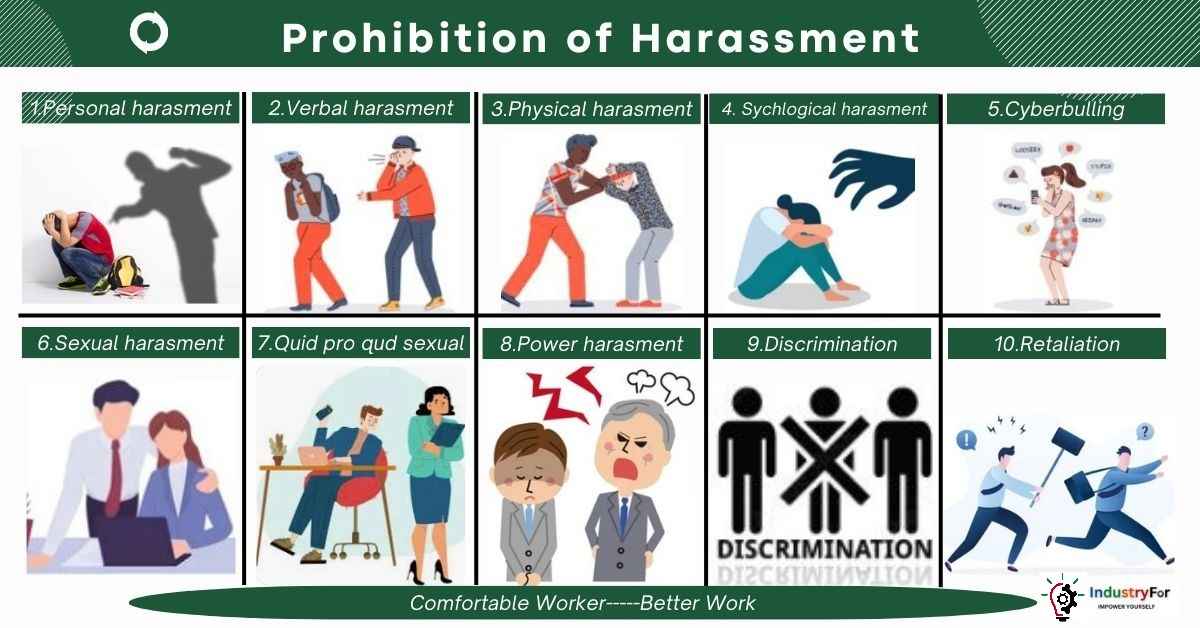
1. Personal harassment.
On the topic of workplace harassment, this type of harassment is widespread. It generally says some abusive words about the physical, mental, or personality position of a person. Others highlight a person’s small mistake to laugh at him, which is known as personal harassment.
Personal harassment is very common in our society. Some people do not consider personal harassment to be harassment. They believe personal harassment to be enjoyment and time passes. Other than this type of harassment, it has a destructive impact on a person. And make a person nervous, demotivated, and underconfident.
2. Verbal harassment.
Attack a person for abuse and say some harsh words without any serious issue. This type of harassment creates an intense work environment. And promote the trend of back betting. Every worker should respect his colleagues, juniors, and seniors and respectfully converse with them. To stop this type of harassment.
3. Physical harassment.
A person is physically harassed when subjected to torture as a form of punishment or to enjoy their hesitation. This type of harassment has the worst impact on affected people. Sometimes people attempt suicide or leave their jobs. The government and companies should stop strictly this type of harassment. And make a policy on this type of harassment.
4. Psychological harassment.
Saying some of those types of words makes a person feel abused or guilty this type of harassment is called psychological harassment. Criticizing each activity or work of a person although this is good or bad is also psychological harassment. Mental harassment is referred to as this type of harassment. Psychological harassment affects people who try not to go in front of other people. Their talent and confidence is going down day by day. Other than sensitive people, this type of harassment.
5. Cyberbulling harasment.
Employees facing such harassment often endure emotional distress, decreased productivity, and a hostile work environment. Organizations must address this issue proactively.
Cyberbullying harassment in the workplace can take these forms such as:
- Offensive emails.
- Hurtful comments in virtual meetings.
- Sharing of inappropriate content.
Such behavior damages individual well-being and tarnishes the company’s reputation.
To combat workplace harassment, companies should implement strict anti-harassment policies and provide comprehensive training to employees. Encouraging a culture of respect and open communication is essential. Employees should feel safe reporting incidents without fear of retaliation.
By taking a firm stand against cyberbullying, organizations can create a healthier work environment where employees can thrive, collaborate, and innovate without the distress of harassment. Addressing this issue head-on is not just a legal obligation; it’s a moral imperative to ensure a safe and inclusive workplace for all.
6. Sexual harassment.
When a person does some activity with others to show his mindset set he attempts to fulfill his sexual needs.
7. Quid pro qud sexual harasment.
Sharing or sending prohibited material like video, audio, and images to someone male or female without his/her permission. Quid pro quo sexual harassment occurs when someone is pressured into having sex in exchange for something.
8. Power harassment.
This type of harassment is attempted by empowered personalities like bosses and seniors. and affected the junior workers female/male. The senior cries and shows his power to his junior.
Rarely do senior personalities or the Owner use this type of workplace harassment. This type of harassment creates hesitation in the minds of workers.
9. Discrimination
Discrimination in the workplace is a grave concern. It undermines equality, fosters a toxic environment, and hinders both personal and professional growth. Combating it is paramount.
When work-ethics and specialties are disregarded, the selection of persons for receiving benefits is called discrimination. There are no equal rules for all. Discrimination has a very bad impact on our society and industry. Illegible people do not perform efficiently in high posts.
10. Retaliation
Workplace harassment is an unfortunate reality in many organizations, and it often leaves victims grappling not only with the initial mistreatment but also the potential threat of retaliation. Retaliation occurs when an employer or colleagues take adverse actions against someone who has reported harassment or discrimination. It’s a serious issue that can have long-lasting effects on individuals and workplace culture.
One of the key challenges in addressing workplace harassment is ensuring that those who report it are protected from retaliation. Employees should feel safe and empowered to speak up without fear of negative consequences. To combat this, organizations must establish clear anti-retaliation policies and provide training to both employees and managers.
Preventing retaliation involves fostering a culture of accountability and transparency. Employee complaints should be handled professionally and impartially by supervisors. Employees should be aware of their rights and protections under the law.
by actively addressing retaliation as part of their anti-harassment efforts. Companies can create a workplace where employees feel secure, valued, and confident. Their concerns will be addressed appropriately. In doing so, they not only comply with legal obligations but also contribute to a healthier and more inclusive work environment.